Abbiamo intervistato Kapote, aka Mathias Modica, nonché la mente creativa della rinomata etichetta discografica Toy Tonics.
Nato da madre italiana e padre tedesco, Kapote cresce in un ambiente in cui la passione per la musica regna sovrana e fin da subito si avvicina ad essa. Inizia il suo percorso musicale studiando il pianoforte e cantando in alcuni gruppi jazz.
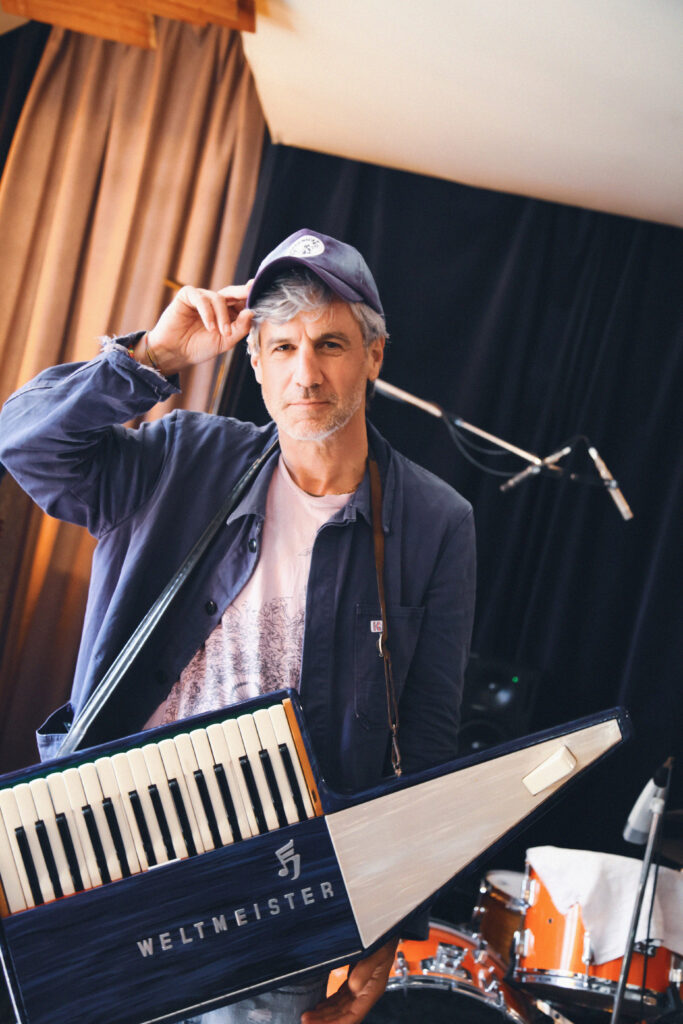
A partire dal 2000 Kapote inizia il suo percorso all’interno delle etichette discografiche. Sempre nel ’00 fonda la Gomma Records, fino ad arrivare alla nascita dei due grandi capisaldi della sua vita attuale: Kryptox e Toy Tonics.
La prima, Kryptox, con sede a Berlino, seleziona musicisti e band principalmente della città di fondazione, dalle note perlopiù jazz. La seconda, Toy Tonics, ha invece uno spirito internazionale e vede al suo interno membri sparsi per il mondo, con diverse sfumature di disco-house-funky.
Dalla sua fondazione, Toy Tonics è diventata la nuova frontiera della disco italiana. Dal 2015, la label ha organizzato immancabili Toy Tonics Jam, pubblicato con costanza artisti di spicco della label come Sam Ruffillo e nel 2021 ha riunito gli artisti della crew con la compilation per eccellenza, Italomania Vol I.
Proprio in occasione dell’uscita di Italomania Vol. II abbiamo intervistato il membro di spicco di Toy Tonics, Kapote.
L’INTERVISTA
Ciao Kapote, benvenuto in Parkett! È un piacere averti con noi! Come ti senti? Come stai vivendo questo periodo?
Ciao! Grazie, sto molto bene, e voi?
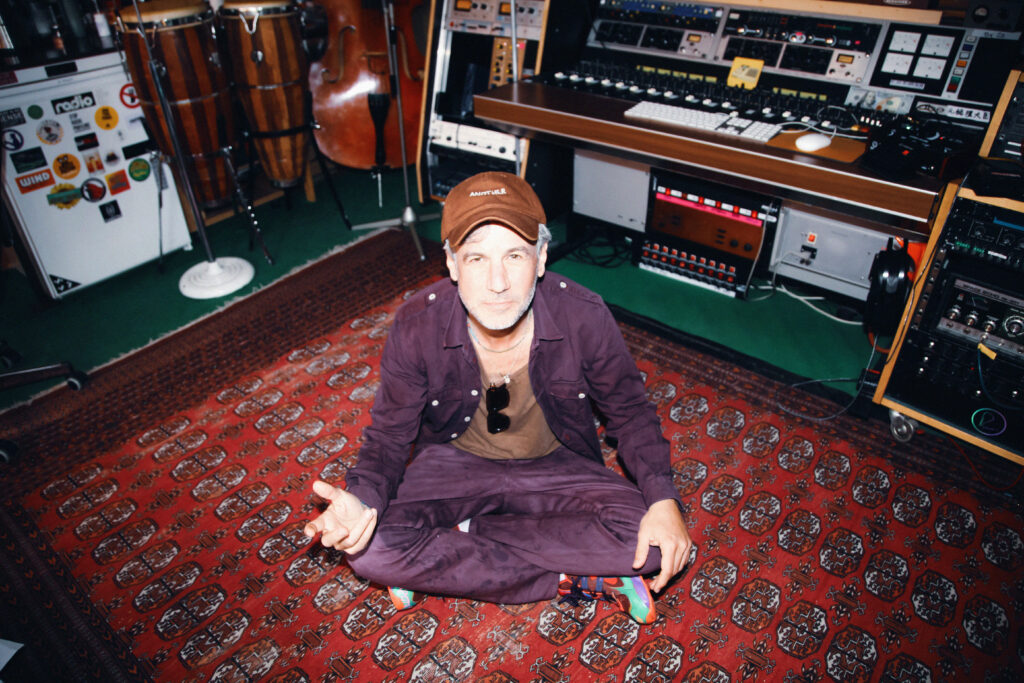
Tutto bene, grazie! Il 20 settembre è uscito Italomania Vol. II: come si inserisce ‘Sono Tropical’ all’interno del disco?
È un pezzo creato con molta ironia, basato su un beat e un riff di pianoforte in stile ‘rumba’ anni ’50, ispirato a Tito Puente, con un mix di spagnolo e italiano. Doveva chiamarsi ‘Suono Tropical’, ma poi è diventato ‘Sono Tropical’. Ho suonato le tastiere e tutti gli altri strumenti, e anche la voce maschile è la mia. La voce femminile, invece, proviene da un programma di intelligenza artificiale che ha generato un timbro vocale affine al mio.
In Italomania ci sono molti artisti, anche molto differenti. Quali sono state le vostre scelte artistiche e in che modo, secondo te, danno un contributo alla visione del disco?
L’idea era di creare un sound Disco attuale, positivo e in italiano. Da qualche anno c’è un grande revival dell’Italo Disco anni ’80 a livello mondiale, ma prevalentemente in inglese. Ora trovo più fresco usare l’italiano, ispirandomi agli anni ’70 italiani, e per questo ho coinvolto tredici musicisti con quell’attitudine, chiedendo loro di collaborare. Tra artisti e produttori, sono tutti amici miei, alcuni molto noti, come DJ Severino, che vive a Londra e fa parte della scena LGBTQ londinese con il suo progetto Horse Meat Disco, famoso in tutto il mondo. Oppure Tommiboy, che ha creato hype in Italia suonando un mix molto interessante, oltre a lavorare come sound designer per brand di moda come Gucci.
Un altro esempio è Sam Ruffillo, che sta creando un nuovo stile Dance/House italiano molto organico, ed è quasi più popolare all’estero che in Italia. E ovviamente Myss Keta, che è il personaggio più famoso, molto interessante perché unisce l’underground dance con lo zeitgeist del pop attuale, combinando moda, arte ed elettronica in modo molto originale. Probabilmente l’artista italiana più internazionale del momento.
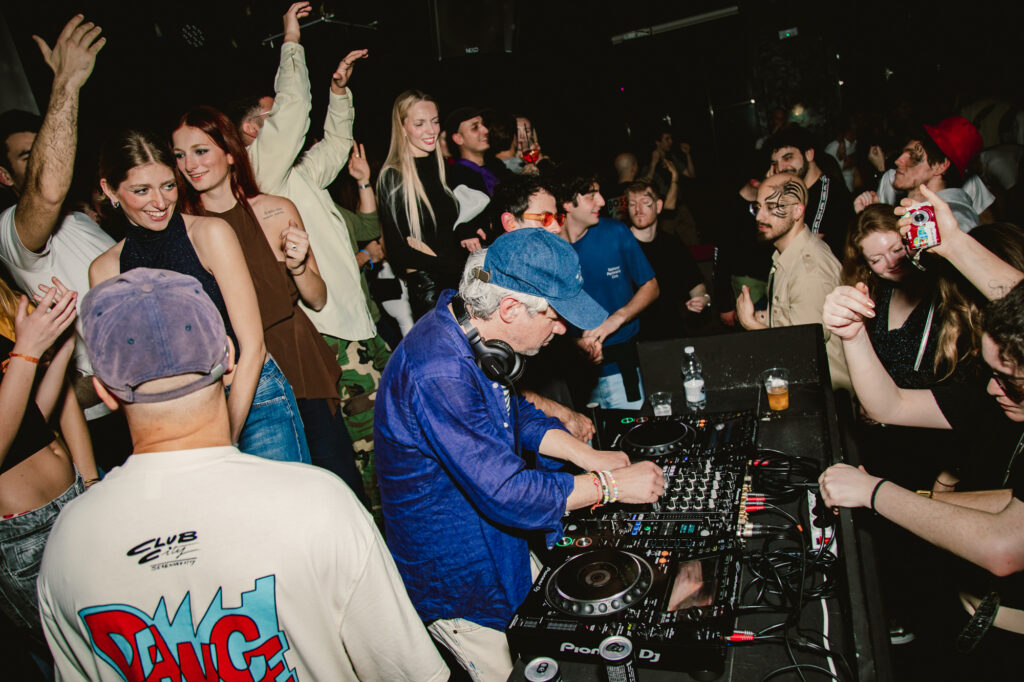
Rimanendo sul genere del disco, secondo te come si sta evolvendo la scena disco italiana contemporanea?
In tutto il mondo, non solo in Italia, negli ultimi dieci anni c’è stata un’ondata di techno molto dura da una parte, e dall’altra la trap. Tuttavia, dopo dieci anni, ogni stile di musica popolare stanca, e una nuova generazione di giovani sente il bisogno di novità. Così si sta sviluppando un nuovo interesse per stili più Disco e House a livello globale. Molti artisti che in precedenza facevano rap o techno stanno iniziando a produrre House e anche Modern Disco. Proprio come in America artisti come Rihanna o Drake, anche in Italia alcuni, come Fedez e altri, hanno espresso un interesse per la Disco e la House, con un’atmosfera più positiva. Questi cambiamenti li noto anche osservando il dancefloor. È qualcosa che sta già accadendo a Berlino e in molti club, come il Berghain, e che sta arrivando anche nelle radio e nei festival internazionali.
Che differenze principali noti tra la scena disco italiana e quella tedesca?
Gli italiani, ovviamente, essendo un popolo festaiolo e avendo nel sangue una vena latina, amano più il funk, il groove e le melodie rispetto ai tedeschi. I tedeschi sono più conservatori, specialmente nella musica, nella moda e nella cultura pop. Le tendenze arrivano più tardi e vengono percepite in modo meno emotivo e intuitivo rispetto all’Italia. Inoltre, gli italiani hanno uno spirito più aperto ed empatico, il che cambia molto il modo in cui viene recepita la musica.
Nella tua vita ci sono due grandi punti saldi: Kryptox e Toy Tonics. Come convivono queste due realtà nella tua vita?
Toy Tonics è interamente concentrata sulla cultura della dance music e della DJ culture. Kryptox invece si focalizza su veri musicisti e band, con quasi nulla di elettronico; la maggior parte delle uscite non è pensata per far ballare. Tuttavia, entrambi i progetti cercano di pubblicare materiale che sia innovativo, di qualità e fuori dagli schemi.
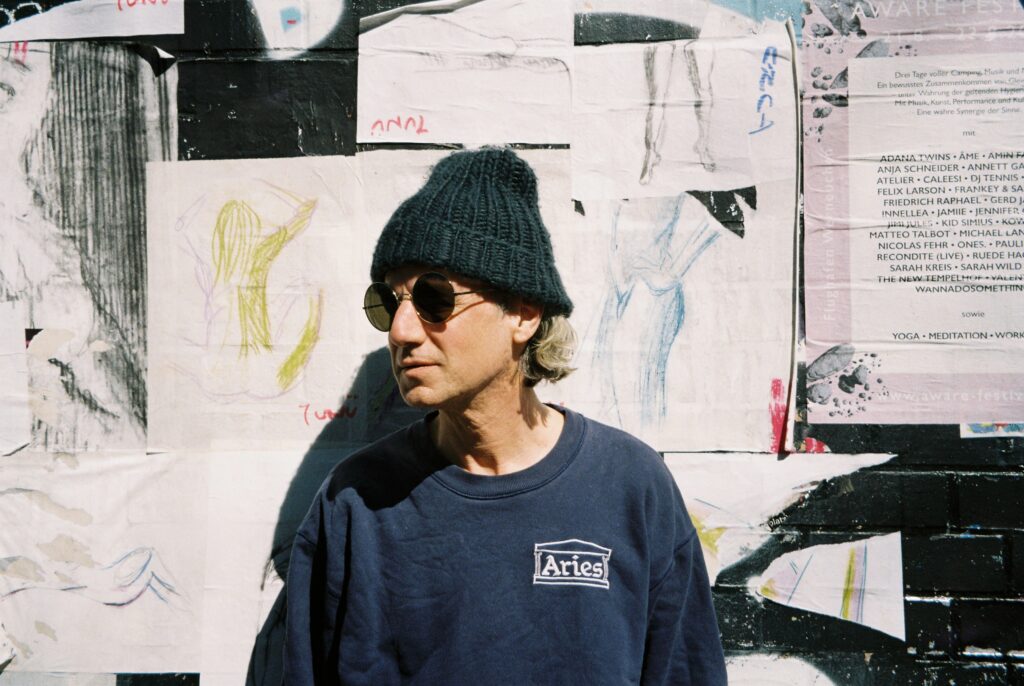
Nel tuo universo sonoro ci sono diversi generi musicali che spaziano tra il jazz e l’house. Per te oggi verso quali nuove dimensioni ed esperimenti va la contaminazione tra i generi?
Io sono interessato a ogni tipo di musica, da Luciano Berio ad Aphex Twin, da Pino D’Angiò a Four Tet. Poi, ovviamente, ci sono momenti in cui alcune influenze si riflettono nelle uscite delle mie etichette, e altre no. Al momento trovo molto interessante osservare come la musica dance sia diventata mainstream e commerciale, e rifletto su come io possa contribuire e apportare cambiamenti in questo mondo con la mia piccola crew di artisti.
Di recente, Toy Tonics ha pubblicato un post su Instagram in cui ha parlato di come alle feste di Toy Tonics non sia necessaria una ‘no phone policy’, in quanto le persone durante il party non sentono necessità di utilizzarlo. Cosa ne pensi?
C’è il fenomeno di Keinemusik e Afterlife (due esempi tra tanti), dove sembra che la maggior parte delle persone non vada perché ama la musica o perché vuole ballare, ma perché vogliono filmare e avere prove di essere stati all’evento sui loro cellulari. Allo stesso tempo, molti club vietano l’uso dei cellulari. Spesso, perché non vogliono persone ferme con la luce dei telefonini o perché non vogliono mostrare quante droghe e quanta “gente fatta” circoli nel loro club (vivo a Berlino, ne so qualcosa… haha).
Ma da noi, con Toy Tonics, non c’è bisogno di divieti, perché la maggior parte del nostro pubblico alle Toy Tonics Jams, le feste che organizziamo in giro per l’Europa ogni weekend, viene per ascoltare e ballare la musica. Si vedono pochissimi cellulari, e quei pochi che filmano fanno bene. Perché così si mostra che da noi la gente è molto bella e interessante, e viene per ascoltare la musica e incontrarsi, non per drogarsi o per i social media. Abbiamo un pubblico molto bello e variegato, non mainstream.
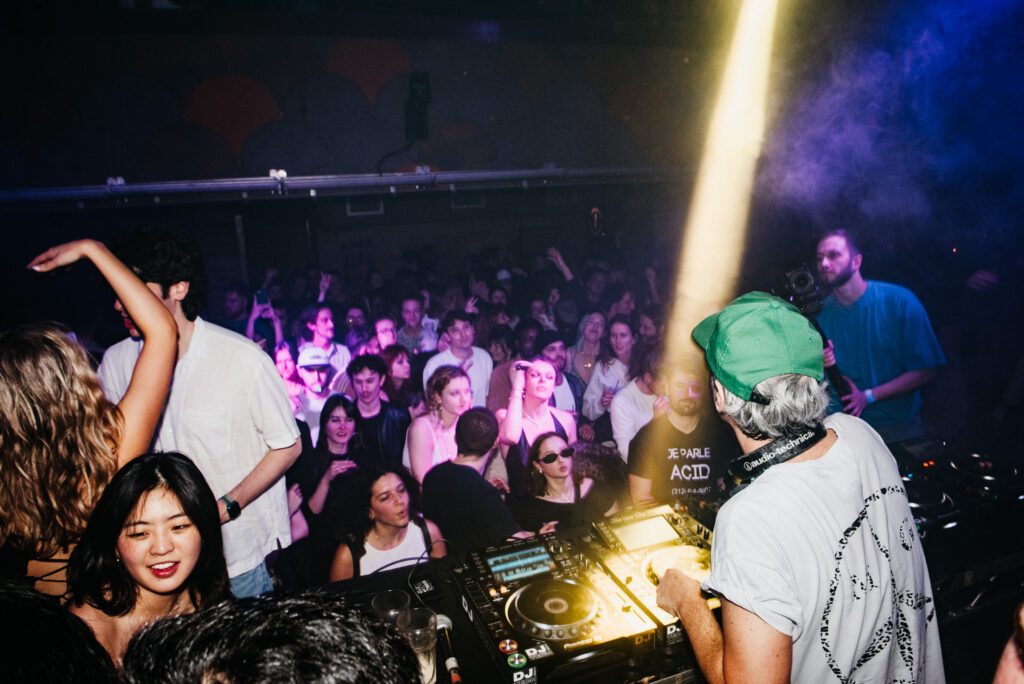
I tuoi interessi sono vastissimi: dalla musica, all’arte, alla moda. Su cosa ti stai concentrando in questo momento della tua vita? Hai altri progetti imminenti di cui ci vuoi parlare?
Al momento mi piace tantissimo girare ogni weekend con la mia crew di Toy Tonics e creare gli eventi Toy Tonics. Ma ho anche altre passioni: ho appena pubblicato il nostro TOY TONICS POSTER MAGAZINE N°3, una rivista dedicata alla fotografia con lavori esclusivi di 20 fotografi berlinesi, alcuni molto famosi. Facciamo esposizioni con questi lavori e artisti a Monaco, Berlino, Parigi e spero presto anche a Milano. Ho tantissimi amici artisti, illustratori e fotografi, e mi piace realizzare progetti con loro.
Grazie Kapote! Alla prossima!
ENGLISH VERSION
The new Italian disco scene: interview with Kapote
We interviewed Kapote, aka Mathias Modica, as well as the creative mind behind the renowned Toy Tonics record label.
Born to an Italian mother and a German father, Kapote grew up in an environment where passion for music reigned supreme, and from early on he was drawn to it. He began his musical journey by studying piano and singing in a few jazz groups.
Starting in 2000 Kapote began his journey within record labels: in 2000 he founded Gomma Records, leading to the founding of the two great cornerstones of his current life: Kryptox and Toy Tonics.
The first, Kryptox, based in Berlin, selects musicians and bands mainly from its founding city from jazz notes. The second, Toy Tonics, on the other hand, has an international spirit and has members scattered around the world, with different shades of disco-house.
Since its founding, Toy Tonics has become the new frontier of Italian disco. Since 2015, the label has organized unfailing Toy Tonics Jam, consistently released prominent label artists such as Sam Ruffillo, and un 2021 has reunited crew artists with the quintessential compilation, Italomania Vol I.
Just on the occasion of the release of Italomania Vol. II, we interviewed prominent Toy Tonics member Kapote.
THE INTERVIEW
Hello Kapote, welcome to Parkett! It’s a pleasure to have you with us! How do you feel? How are you experiencing this period?
Hi! Thank you, I’m very well, and you?
All good, thanks! Italomania Vol. II released on September 20th: how does ‘Sono Tropical’ fit within the album?
It is a piece created with a lot of irony, based on a 50s ‘rumba’ style beat and piano riff, inspired by Tito Puente, with a mix of Spanish and Italian. It was supposed to be called ‘Suono Tropical,’ but then it became ‘Sono Tropical.’ I played the keyboards and all the other instruments, and the male voice is also mine. The female voice, on the other hand, came from an artificial intelligence program that generated a vocal timbre akin to mine.
In Italomania there are many artists, including very different ones. What were your artistic choices and how do you think they contribute to the vision of the record?
The idea was to create a current Disco sound, positive and in Italian. For the past few years there has been a great revival of 80s Italo Disco worldwide, but mostly in English. Now I find it fresher to use Italian, inspired by the Italian 70s, so I involved thirteen musicians with that attitude and asked them to collaborate. Between artists and producers, they are all friends of mine, some very well known, like DJ Severino, who lives in London and is part of the London LGBTQ scene with his world-famous Horse Meat Disco project. Or Tommiboy, who has created hype in Italy by playing a very interesting mix, as well as working as a sound designer for fashion brands like Gucci.
Another example is Sam Ruffillo, who is creating a new Italian Dance/House style that is very organic, and is almost more popular abroad than in Italy. And of course Myss Keta, who is the most famous character, very interesting because she combines underground dance with the zeitgeist of current pop, combining fashion, art and electronics in a very original way. Probably the most international Italian artist of the moment.
Staying on the genre of disco in your opinion, how is the contemporary Italian disco scene evolving?
All over the world, not only in Italy, in the last ten years there has been a wave of very hard Techno on one side, and Trap on the other. However, after ten years, every style of popular music gets tired, and a new generation of young people feels the need for something new. Thus a new interest in more Disco and House styles is developing globally. Many artists who previously did rap or techno are starting to produce House and even Modern Disco. Just like in America artists like Rihanna or Drake, some in Italy, like Fedez and others, have also expressed an interest in Disco and House, with a more positive vibe. I also notice these changes by observing the dancefloor. It is something that is already happening in Berlin and in many clubs, such as Berghain, and it is also coming to international radio stations and festivals.
What main differences do you notice between the Italian and German disco scene?
The Italians, of course, being a party people and having a Latin streak in their blood, love funk, groove and melodies more than the Germans. Germans are more conservative, especially in music, fashion and pop culture. Trends come later and are perceived less emotionally and intuitively than in Italy. Also, Italians have a more open and empathetic spirit, which greatly changes the way music is received.
In your life there are two major staples: Kryptox and Toy Tonics. How do these two realities coexist in your life?
Toy Tonics is entirely focused on dance music and DJ culture. Kryptox, on the other hand, focuses on real musicians and bands, with almost nothing electronic; most of the releases are not meant to make people dance. However, both projects try to release material that is innovative, quality and out of the box.
In your sonic universe there are different genres of music ranging between jazz and house. For you today, toward what new dimensions and experiments is the contamination between genres going?
I am interested in all kinds of music, from Luciano Berio to Aphex Twin, from Pino D’Angiò to Four Tet. Then, of course, there are times when some influences are reflected in my label releases, and some are not. At the moment I find it very interesting to observe how dance music has become mainstream and commercial, and I reflect on how I can contribute and make changes in this world with my small crew of artists.
Recently, Toy Tonics made a post on Instagram in which he talked about how at Toy Tonics parties there is no need for a ‘no phone policy,’ as people during the party feel no need to use it. What are your thoughts on this?
There is the phenomenon of Keinemusik and Afterlife (two examples among many), where it seems that most people don’t go because they love the music or because they want to dance, but because they want to film and have evidence of having been at the event on their phones. At the same time, many clubs prohibit the use of cell phones, often because they don’t want people standing still with lights on their phones or because they don’t want to show how many drugs and how many ‘stoned people’ are circulating in their club (I live in Berlin, I know a little bit about that…haha).
But at our place, with Toy Tonics, there is no need for bans, because most of our audience at Toy Tonics Jams (the parties we organize around Europe every weekend) come to listen and dance to music. You see very few cell phones, and those few that do film do well, because then it shows that people are very nice and interesting at our place, and they come to listen to music and meet each other, not to do drugs or social media. We have a very nice and diverse audience — not mainstream.
Your interests are very broad: from music, to art, to fashion. What are you focusing on right now in your life? Do you have any other upcoming projects you want to tell us about?
Right now I’m really enjoying shooting every weekend with my Toy Tonics crew and creating Toy Tonics events. But I also have other passions: I just published our TOY TONICS POSTER MAGAZINE No. 3, a magazine dedicated to photography with exclusive work by 20 Berlin photographers, some very famous. We do exhibitions with these works and artists in Munich, Berlin, Paris and hopefully soon in Milan. I have a lot of artist friends, illustrators and photographers, and I enjoy doing projects with them.
